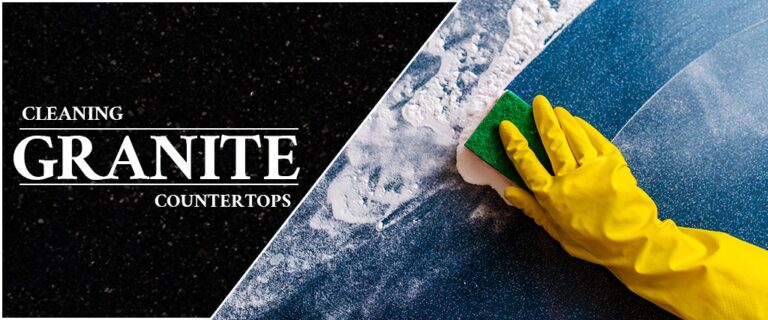Cleaning Granite Counter-Top Drying and Stain Removal of Granite is an igneous, common, coarse-grained rock that primarily consists of quartz, orthoclase or microcline, mica, and other minerals. Its primarily used in construction since its such a durable material. It has a wide range of industrial and household uses. Its natural colors and patterns add great design value to your home. To ensure long-lasting perfect granite surfaces, it is essential to maintain and clean them with the right techniques and to remove stains that cause permanent damage. Here is a basic guide to cleaning granite countertops and treating stains the right way.
First and foremost is a set of basic cleaning steps, that have to be followed regularly to maintain clean long-lasting countertops.
1. Clean surfaces
Always ensure that the countertop is free of any food crumbs. To do this, just wipe off the countertop with a dry paper towel or dry cloth. Do not use a wet cloth to wipe dry food off the counter.
2. Wiping it
Once the dry waste or dust is removed with a dry cloth, spray the counter with a general cleaning liquid, or diluted dish washes soap water, and wipe it off with a wet cloth. Any superficial stains are removed in this process.
3. Removing with razor blades if there is a build-up
If there is a build-up of a stain, and it’s dried up, carefully scratch it off with a razor blade very gently. Doing this vigorously or carelessly might leave scratches on the granite top.
Types Of Stain
To specifically clean stains on the granite, it is important to identify the type of stain and to treat it accordingly. Here are some common stains and how to tackle them
1 .Oil stains
Oil stains are the toughest to remove since granite is a porous material and it is quite easy for the oil to seep through. Hence these stains have to be treated immediately, and the only way to do so is by drawing out the oil. This can be done by a soft liquid cleanser mixed with drops of ammonia or acetone. Spray it on the spot and dab with a paper towel to remove the oil.
2. Cooking stains
These stains are very common in an Indian household, especially on lighter color countertops since Indian cooking uses a lot of turmerics. Turmeric might leave a yellow residue on the countertop when it’s not chemically treated before installation. To handle organic stains, it is best to Spot clean the stained area with 12% hydrogen peroxide mixed with a few drops of ammonia.
3. Ink or paint stains
Ink stains or paint stains are best removed using hydrogen peroxide or paint thinner. Hydrogen peroxide works best on light-colored granite stones and pen and marker stains. While a paint thinner is best for dark-colored stones and for tough paint stains. Please make sure to do a patch test on a sample before using it on your countertop since these are very strong chemicals. You can always opt for a professional cleaning service if the stains are larger and tougher to clean at home.
Some stains might be more complex and trying to clean them at home might cause more damage. It is always advised to take professional advice before starting a treatment process. For more information regarding granites and Quartz, please visit our website www.vsbsurfaces.com.

